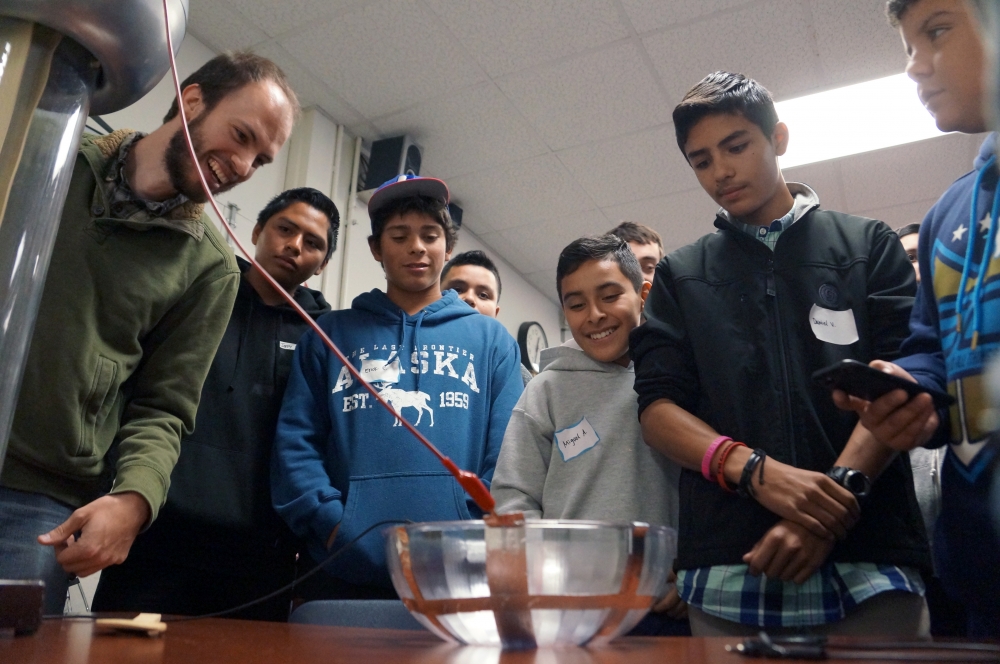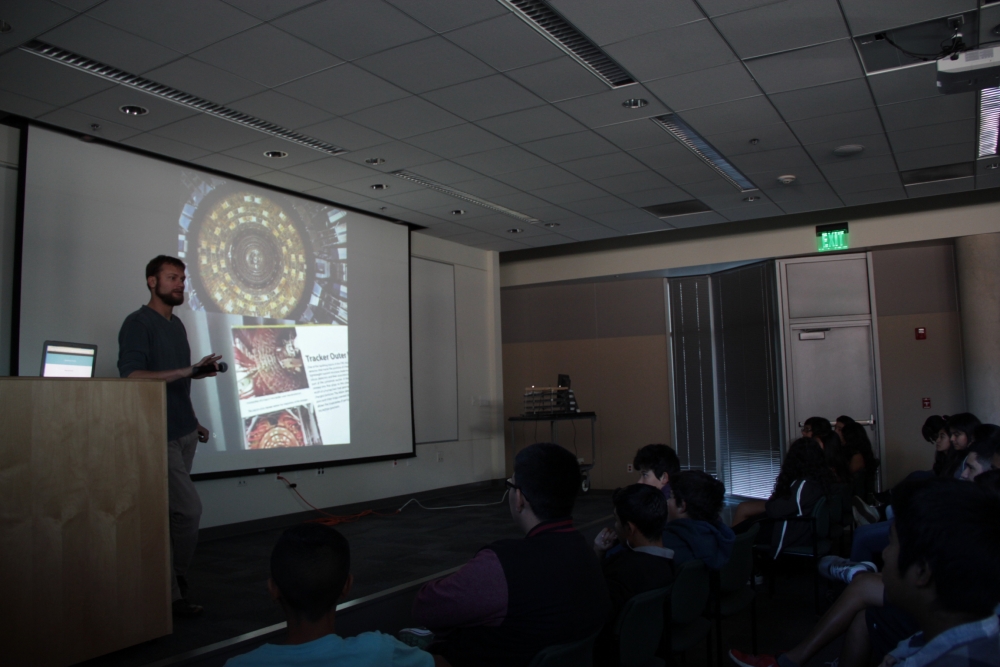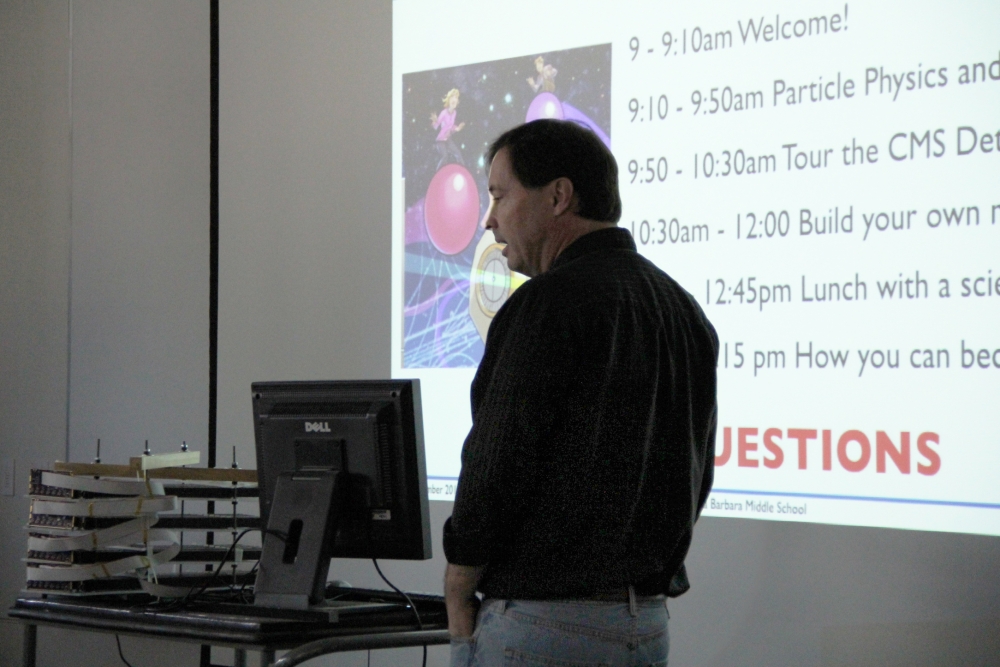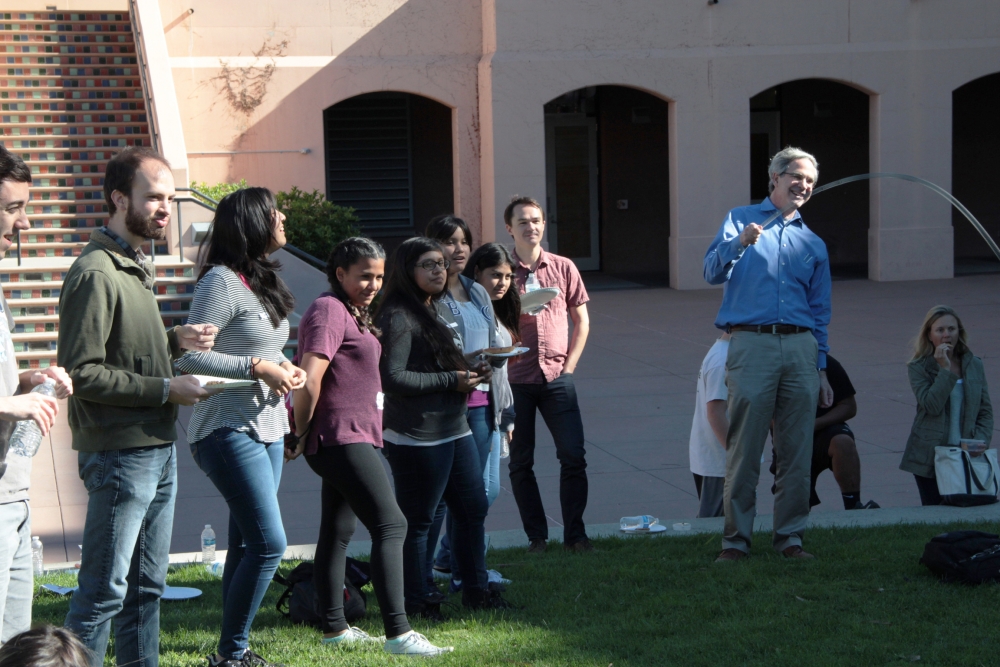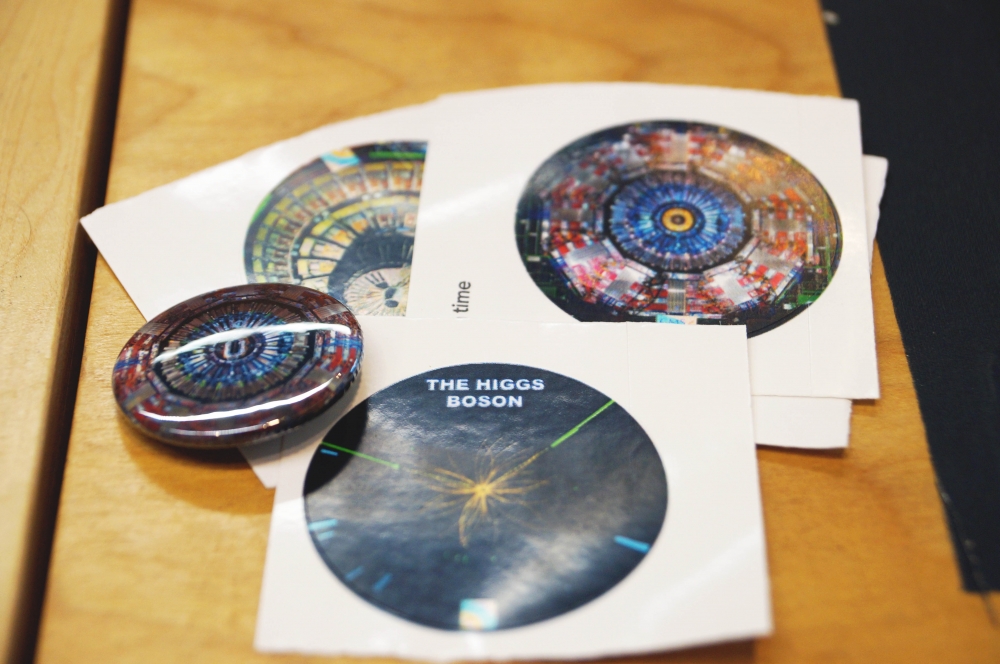Particle Physics Day
Virtual tours, meetings with members of UC Santa Barbara’s High Energy Physics Group and hands-on experiments (including one with a salad bowl accelerator) marked the Particle Physics Day outreach event at UC Santa Barbara on Thursday, Nov. 17. Postdoctoral researchers Indara Suarez and Frank Golf, members of the Compact Muon Solenoid (CMS) project at the European Organization for Nuclear Research, hosted a class of about 50 students from Santa Barbara Middle School for a daylong exploration of the world’s largest scientific experiment. The outreach was made possible with an Education & Outreach Grant from Fermilab National Laboratory.
“Dr. Frank Golf and I have been visiting middle schools in Southern California for the past three years to give virtual tours of our detector in Geneva and communicate the science that we do to the students,” Suarez said. “After a couple of years of conducting virtual visits with inner city schools, it has become very clear to us that for most of these students, who have no family that have ever attended university, going to college seems like an unattainable goal, let alone a career in science.”
Suarez, who emigrated from Mexico as a youth and is a first-generation scientist in her own family, was acutely aware of the challenges that face many young students who may have inclinations toward the STEM fields but not the exposure and foundations at home to pursue a university degree. “We chose to work with middle school students because there is strong evidence that students begin to lose interest in science at a young age,” she said.
The day was packed also with presentations made and activities led by UCSB’s own high-energy physicists, including a demonstration of the CMS detector by David Stuart and a lunchtime activity on transverse and longitudinal waves led by Jeffrey Richman. With some salad bowls, metallic tape and a source of current, graduate student researcher Adam Dishaw helped the kids conduct their own tabletop accelerator experiments. The middle schoolers capped the day with prizes for the most successful experiment and some motivation to seek out a university degree in the future.
